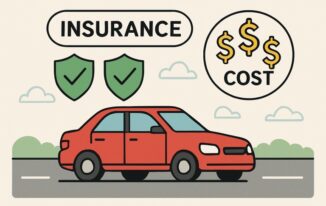
Last year, Northwestern Mutual observed that Americans steadily reduced their debts despite rising inflation. Their data indicated that from 2019 to 2021, the average debt per person saw the largest decline, dropping by $6,475. This trend was likely due to individuals being able to save more and spend less during the early pandemic years.
However, the situation in 2024 is different. On average, people now owe more than they did last year. Northwestern Mutual reported that the average personal debt (excluding mortgages) per person increased by approximately 4% (from $21,800 in 2023 to $22,713 in 2024). Even worse, there’s increasing uncertainty about how to manage and pay off this debt.
In this article, we’ll review the basics. Let’s discuss Debt Snowball and Debt Avalanche and determine which is best for your situation.
Understanding Debt Snowball
The Debt Snowball method focuses on paying off your smallest debts first. It’s called the “snowball” method because, like a snowball rolling downhill, you start small and gain momentum as you go.
Here’s how to do it:
- List all your debts from smallest to largest, regardless of interest rates.
- Make minimum payments on all your debts except the smallest one, to which you direct any extra funds.
- After paying the smallest off, proceed to the next smallest debt. Then add the amount you were paying on the previous debt to the new target.
The Debt Snowball method works well with smaller debts that can be paid off quickly. By “small” debts, we’re referring to medical bills, store credit cards, or small personal loans, like those found in CreditNinja.com, typically ranging from about $100 to $2,000.
Individuals who find it challenging to stay disciplined with long-term financial goals may also benefit from Debt Snowball. The frequent payoffs provide a sense of accomplishment and progress, making staying committed to the plan easier.
Pros and Cons of Debt Snowball
One significant benefit of the Debt Snowball method is its simplicity and ease of implementation. There’s no need to calculate interest rates or prioritize debts based on complex criteria. As stated, you simply list your debts from smallest to largest and focus on paying off the smallest one first.
Another benefit is the psychological advantage it offers. Fast repayments of smaller debts can provide a sense of achievement and encourage you to keep going. This method is particularly beneficial for those who need frequent positive reinforcement to stay on track with their debt repayment plan.
However, the main drawback is that you might pay more in interest over time. Since it doesn’t prioritize debts with higher interest rates, you could end up paying more compared to other methods. To mitigate this, you can periodically review your progress and consider switching to a different method if interest costs become too high.
Additionally, if you have many small debts, constantly shifting focus can become overwhelming and lead to burnout before significant progress is made on larger debts. To address this, set realistic goals and pace yourself to avoid feeling overwhelmed. For example, pay off one small debt every few months to ensure each target is achievable to your financial situation.
Understanding Debt Avalanche
The Debt Avalanche method takes a different approach by first focusing on paying off debts with the highest interest rates. It’s called the “avalanche” method because, like an avalanche gaining speed and strength as it descends, it gains momentum by eliminating high-interest debts, which can significantly reduce the overall interest paid over time.
Here’s how to do it:
- List your debts from the highest to the lowest interest rate.
- Make minimum payments on all debts except the one with the highest interest rate, to which you allocate as much extra money as possible.
- Once the highest-interest debt is paid off, move on to the next highest, and so on.
The Debt Avalanche method works well with high-interest debts, such as credit card balances or payday loans. Paying off high-interest debts first can save you a significant amount of money on interest payments over time. It is especially effective for those with the discipline to stay focused on long-term financial goals.
Pros and Cons of Debt Avalanche
One major benefit of the Debt Avalanche method is the potential to save money on interest payments. Prioritizing high-interest debts reduces the total interest paid and can become debt-free faster. This method is ideal for those motivated by long-term financial savings.
Another advantage is that it can lead to faster overall debt repayment. The lower the interest accruing on your debts, the more of your payments go towards the principal balance. This consequently enables you to pay off your debts more quickly.
However, the main issue is that it requires patience and discipline. You might not see immediate progress, which can be discouraging. To stay motivated, remind yourself of the long-term financial benefits and keep track of the interest savings you are achieving.
Another potential drawback is the need for strong financial discipline. The Debt Avalanche method might be challenging if you struggle with sticking to a plan without seeing quick results. To overcome this, set smaller milestones and celebrate progress along the way to maintain motivation.
Final Thoughts
The recommended method depends on one’s financial situation and goals. Debt Snowball is ideal for those who need quick wins to stay motivated, while Debt Avalanche is better for those focused on minimizing interest payments and achieving long-term financial savings. For further questions or personalized advice, consider consulting with financial professionals.



